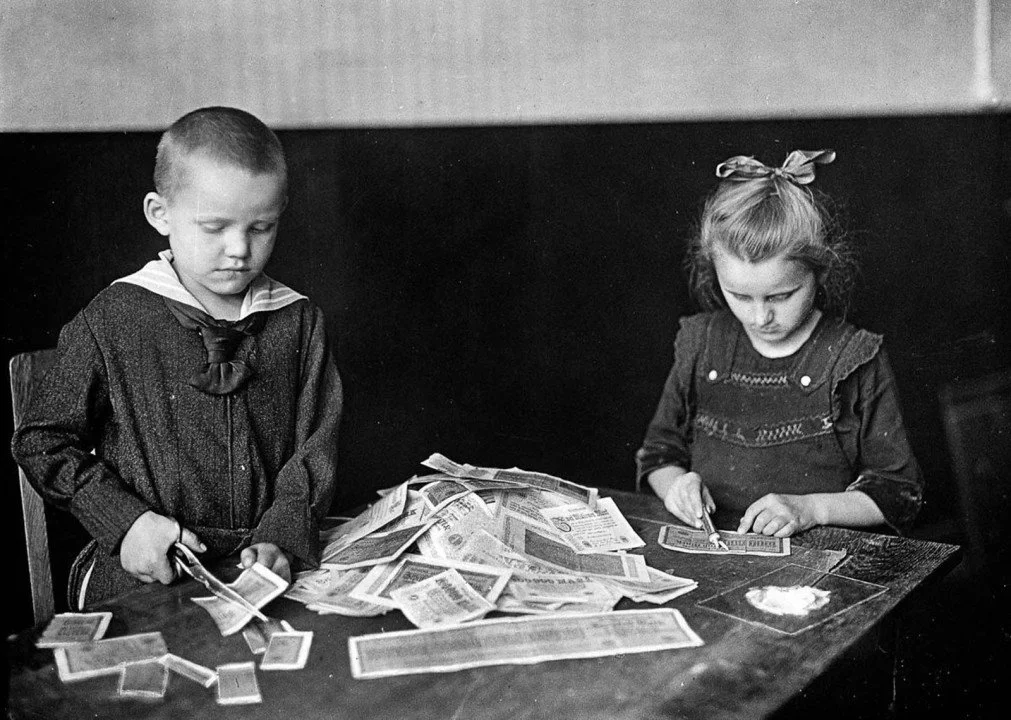Waiting for depression might take more than a lifetime. And what might hit us is inflation and not deflation.
Everything is good with an economy, till it meets with an accident. After which the economy takes time to come back on track and starts growing again. This simple understanding of a business cycle is the very reason why accidents keep happening.
In his 1966 article on business cycles, James Meigs, senior economist, First National City Bank, New York City said, “Money is the missing ingredient from the contemporary discussion of the business cycle.”
But we the society don’t understand the money that we desire. “I am in favor of all kinds of money – the more the better”, these famous words of a politician Richard Boss Croker uttered in 1900 do not really mean any different for society today. And if you consider the mass psychology aspect, we never will really understand. Like we will never realize that inflation targeting is a myth and cannot be controlled or managed at single digits forever.
Inflation defined as a disproportionate and relatively sharp and sudden increase in the quantity of money or credit or both can come in times of business activity by an expansion of credit through banks, or it may come in times of financial difficulty in the form of fiscal stimulus from the government (like what happened recently in the US).
But more than the increase in the quantity of money, it is the fear of inflation that creates a demand hedge, self-feeding on itself. It is also the ‘economic growth at all times’ syndrome which inflates the credit cycle creating instant money.
George T Steve, currency theorist, in his 1965 write-up on cycles in monetary inflation, explains that these cheap money policies to refuel waning prosperity do more harm than good.
Credit inflation causes currency debasement or capital destruction as more money pursues fewer assets creating asset bubbles. Second, as a comparison to the real currency such as gold, the paper money keeps losing purchasing power. And third, the strategy shifts to overcoming successive monetary crises rather than preventing one.
It is because of this human incapacity, cycles work with precision. Just like interest rate cycles, inflation cycles have fixed patterns and periodicity. And though interest rate cycles are also connected with much larger civilization cycles, cyclists have observed and written about the 60-year interest rate cycles. We have had significant interest rate peaks in the 1850s, followed by one in the 1920s and later in the 1980s.
Some observations connect inflation cycles with a similar 54-60 year cycle. This also closely connects interest rates, wholesale prices, and inflation to Kondratieff cycles, a cycle of similar periodicity.
Tony Plummer attempts to explain and connect the K wave along with the triad cycle complex consisting of Kitchen, Juglar, Berry, and Strauss & Howe. The 90-year Strauss and Howe metacycle is larger than the K wave. This is why Kondratieff lows are associated with major depressions, which many anticipate will happen.
The reason it may not happen is that not all Strauss and Howe lows coincide with a Kondratieff low. Strauss and Howe's crisis alternate between deflation and accelerating inflation. This is why the previous Strauss and Howe metacycle deflationary low of 1946 should alternate with an inflationary cycle that should push until 2030 marked by a world war (every Strauss and Howe lows have witnessed a war).
And like a contrarian thought should be, we know just a few market thinkers, Bill Meridian, Robert Gover, and Manfred Zimmel who talk about a total collapse of real money and financial system somewhere after 2015, a classic case of hyperinflation rather than deflation linked depression.
Though this might look improbable and insane, the rise of gold validates the case. The only benchmark of real money, also known as a hedge against inflation might have paused from its relentless rise to $1,000, but the commodity cycle of 30 years starting 2000 keeps the secular trend for gold pointed up. A targeted move up to $3,000, six times from a worst-case base at $500 (if it happens) can really complicate matters for paper money.
Economic cyclists have given inflation a significant role along with other significant cycles, trends, and random fluctuations. And understanding whether we are in an inflationary or deflationary environment is key to understanding how our economic future will be.
And just like the omnipresent 3.5-year rhythm, present in Kitchen’s inventory cycles and stock market prices and more than half of 500 economic series being studied, the inflation cyclicality is another recurring phenomenon. Without a proper understanding of cycles of inflation, the central banker’s guess about the economic cycle stage is as good as yours.
In conclusion, inflation is another accident the business cycle is about to face for more than a few years. How we prepare for it and thrive needs effort and more than a short-term approach. As if the last time we witnessed it to a similar degree was in 1857, then we are already too much in the past to relate to it. A classic problem of econohistory, how can it hit me when it happened so long ago?
